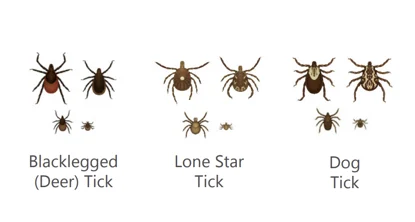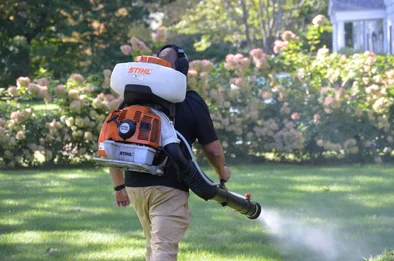Tick Bite Prevention Week: Protecting Yourself from Tick Bites
Learn how to protect yourself from tick bites during Tick Bite Prevention Week.
Understanding the Importance of Tick Bite Prevention

Tick Bite Prevention Week takes place in March every year to help raise awareness of tick bites and the diseases they can transmit. Ticks are small, blood-sucking parasites that can transmit diseases such as Lyme disease, Babesiosis, and Anaplasmosis. Preventing tick bites is crucial to protect yourself from these potentially serious illnesses. By understanding the importance of tick bite prevention, you can take the necessary steps to safeguard your health.
Identifying High-Risk Areas for Tick Bites

Ticks are commonly found in wooded and grassy areas, especially in regions with a high population of deer and other wildlife. Some specific high-risk areas include hiking trails, camping sites, and areas with tall grass or leaf litter. It is important to be aware of these high-risk areas and take extra precautions when visiting them. By identifying these areas, you can minimize your chances of getting bitten by a tick.
Effective Ways to Prevent Tick Bites

There are several effective ways to prevent tick bites and reduce your risk of tick-borne diseases:
- Wear long sleeves, pants, and socks when spending time outdoors in tick-prone areas.
- Use insect repellent on exposed skin and clothing. If you can, opt for a natural insect repellent made from plant-based ingredients.
- Examine clothing, gear, and pets for ticks. Ticks can be carried into the home on you or your pets, and attach later. Make sure you check your coats, backpacks, and dogs for ticks. To kill ticks on your clothing, put them in a dryer on high heat for about 10 minutes.
- Shower when you get in from being outdoors. Research has shown that showering within two hours after being outdoors reduces the risk of Lyme disease and may be effective in reducing the risk of other tick-borne illnesses.
- Perform thorough tick checks after spending time outdoors, paying close attention to areas such as the scalp, ears, and back of the knees.
- Treat your property for ticks. At Pure Solutions, we use an exclusive product designed to eliminate ticks on contact while providing residual control. Our product is all-natural and is safe for people, pets, and the environment. Request a free quote today.
By following these prevention methods, you can greatly reduce your chances of being bitten by a tick.
Recognizing Symptoms of Tick-Borne Illnesses
It is important to be able to recognize the symptoms of tick-borne illnesses, as early diagnosis and treatment are crucial. Some common symptoms of tick-borne diseases include fever, headache, fatigue, muscle aches, and a characteristic rash. If you experience any of these symptoms after a tick bite or spending time outdoors in tick-prone areas, you should seek medical attention. Prompt treatment can help prevent complications and long-term health problems.
What to Do If You Get a Tick Bite
If you get a tick bite, it is important to remove the tick as soon as possible to reduce the risk of disease transmission.
To properly remove a tick:
- Use fine-tipped tweezers to grasp the tick as close to the skin’s surface as possible.
- Pull upward with steady, even pressure, avoiding twisting or jerking motions.
- Clean the bite area with soap and water or an antiseptic.
- Dispose of the tick by placing it in a sealed bag or container.
After removing the tick, monitor for symptoms for 30 days. If you develop symptoms or are unsure about the type of tick that bit you, consult a healthcare professional. Remember, early detection and treatment are key to preventing complications from tick-borne diseases.
Sources:
- Jerry. (2011). Walking a trail in Brown County. Retrieved March 28, 2024, from https://www.flickr.com/photos/way2go/6031783171.
- Preventing Tick Bites. Centers for Disease Control and Prevention. (2020, July 1). https://www.cdc.gov/ticks/avoid/on_people.html
- Symptoms of Tickborne Illness. Centers for Disease Control and Prevention. (2021, August 5). https://www.cdc.gov/ticks/symptoms.html
- Tickborne Diseases. New Hampshire Department of Health and Human Services. (n.d.). https://www.dhhs.nh.gov/programs-services/disease-prevention/infectious-disease-control/tickborne-diseases#:~:text=Lyme%20disease%20(most%20common%20reported%20tickborne%20disease)
